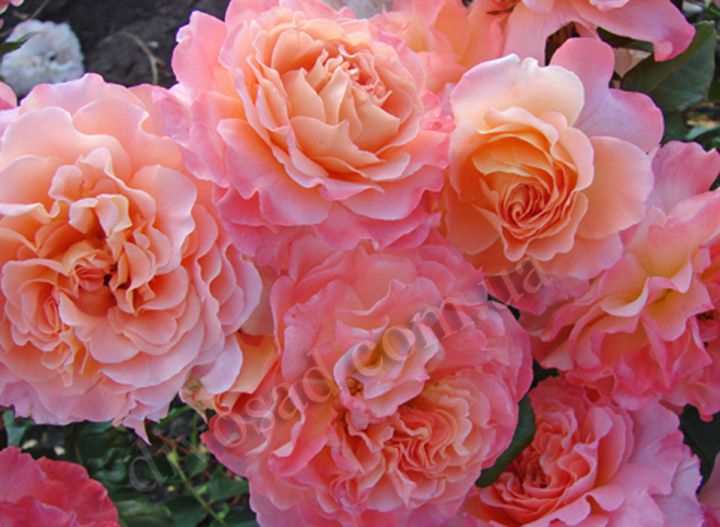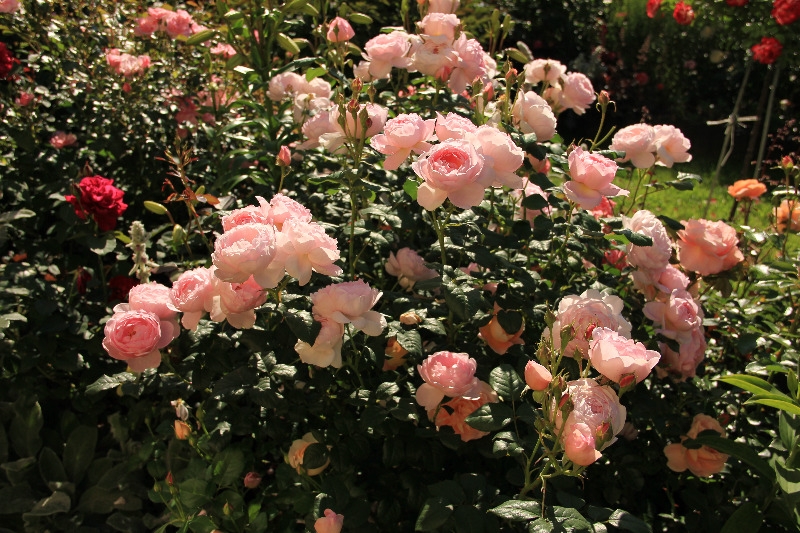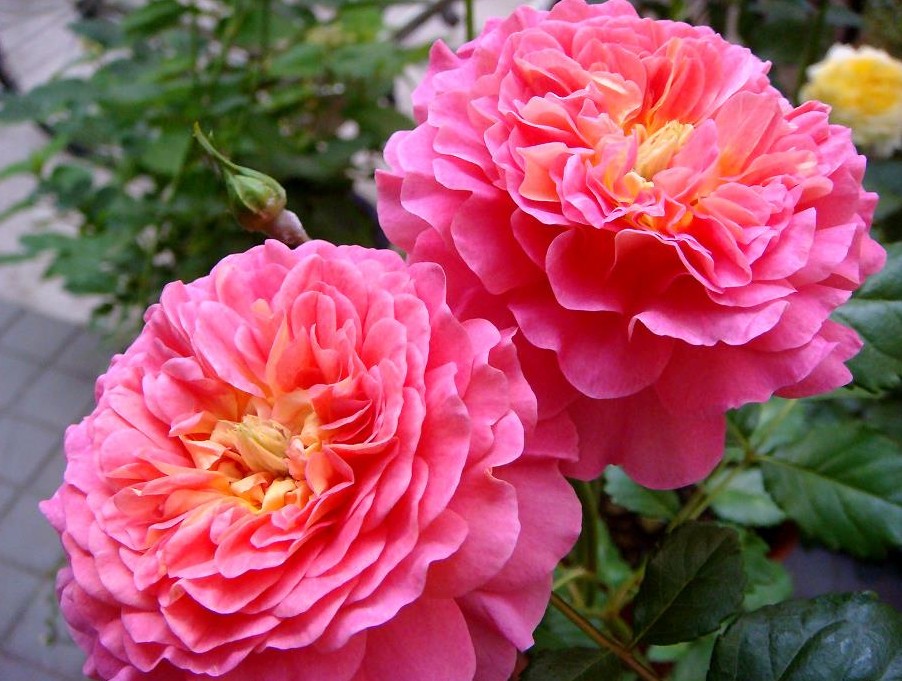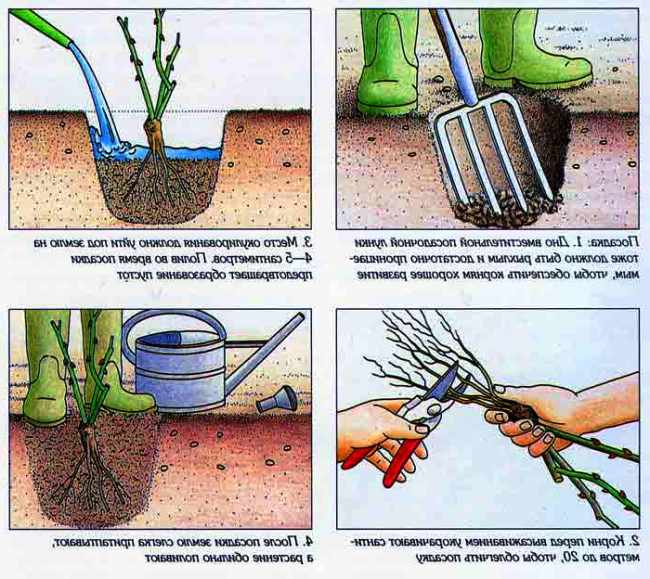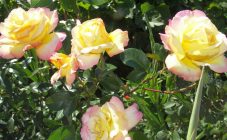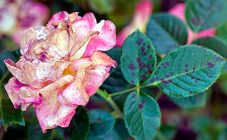Content:
English roses - what are they? English roses are called a large group of varieties created at the end of the 20th century by David Austin, a breeder from England, founder of David Austin Roses.
These are mainly shrubs - shrubs or semi-leafy forms. English roses are the result of crossing Bourbon, Damascus and French varieties with tea hybrids and floribunda roses.
History of creation
The breeder began his work after he saw old roses in France. He wanted to improve them, diversify the color scheme and give the flowers a richer aroma. And also, in order to prolong the admiration for the beauty of these plants, he sought to induce their re-flowering.
The first result of his work in the field of breeding was the Constance Spry. The seedling was obtained by crossing the floribunda Dainty Maid and Bell Isis. The best specimens eventually developed into tall plants adorned with large flowers with a pronounced aroma. David Austin and his friend, Thomas Graham, introduced the plant in 1961. The climbing shape only added to the popularity of the Constance Spry. Austin English climbing roses have flowers along the entire length of flexible stems.
Characteristic
English roses differ markedly from other modern varieties. Some qualities are due to the peculiarities of the English climate and the widespread use of shade-tolerant garden plants. The following properties can be noted:
- Different type of bush growth. The plant can be short, medium, or tall. In shape - climbing, outstretched. In structure - thick or sparse. Changes are possible depending on the climatic zone.
- Cup-shaped or pom-shaped flowers with a wide variety of aromas and shades, including yellow, orange.
- Flowers - simple, semi-double, double and densely double. Solitary or collected in brushes. They can change their color and aroma depending on weather conditions and time of day. The number of petals in one flower can be up to 200.
- Prefer shade and partial shade. Enough 4-5 hours of direct sunlight per day.
- Continuous or repeated flowering.
In addition to positive qualities, some English varieties can demonstrate a number of disadvantages. These include:
- during prolonged rains, the buds cannot always open on their own and it is necessary to manually open some sepals;
- young stems sometimes do not withstand the weight of flowers and bend down to the very ground:
- re-flowering may be weak
Root system
In bushes, the root system is pivotal, but when plants are propagated by a vegetative method, it is fibrous. The adventitious roots are called lobes. With their help, the plant receives food and water from the soil.
The skeletal root is the largest, usually lignified, with a diameter of 2-3 cm. An important element of the plant is the root collar, which connects the stem to the underground part. Depending on the variety and planting depth, its length may vary.
Thorns
There are few thorns on the stems. There are varieties where they are practically absent. Heritage, James Galway, A Shopshire Lad can be planted in areas of the garden that children often visit. The possibility of injury in this case will be minimal.
Leaves
The bushes are mostly dense.Leaves, consisting of 5-7 individual leaves (maybe 15), are attached to the stems with nodes. The color is green, saturated. The surface is glossy and semi-glossy.
Brief characteristics of some species and varieties
The description of all colors is very different. For example, a rather interesting variety of Baby Mason (sometimes in a different edition - English rose bi bi Mason). The height of the bush is up to 2 m. Flowers are of the Old English form, densely double, pink. The aroma is strong.
Another "Austin" is a small rose by Christopher Marlowe. A thick and spreading cousse is decorated with cupped pink-yellow flowers. Christopher Marlowe blooms continuously throughout the summer. The leaves are dark, small, with a good gloss. The plant is highly resistant to the most common diseases. Rose Christopher marlowe does not grow tall, but its thin stems form a fairly spreading bush.
Rose Old Port is the finest purple floribunda. Prefers partial shade. The Old Port rose has proven itself well in temperate climates. In order for the Old Port rose to bloom continuously, regular feeding is required; in bad conditions, the bushes of this variety become smaller.
Rose of Othello is a dark crimson color. The stems have large spines. The foliage is tough. Othello rose has a long-lasting rose oil scent. She is hardy and undemanding to care for. Shrub Othello rose blooms continuously throughout the warm season, the size of its inflorescences will not leave indifferent even a person far from floriculture. Dense double flowers are good for cutting, and on the bushes they are in no hurry to shed their petals.
Indoor flowers Ahimenes resemble English roses. Among them, the most unique is the Achimenes, a yellow English rose. This novelty conquered many with its extraordinary beauty. Flowers are large, shades shimmer from yellow to purple. The bush needs support.
There are English park varieties of roses, which, with their thorns and fertility, are a bit like wild rose and English bush roses with heavy huge flowers, similar to those of tea hybrids.
Reproduction
These plants can be propagated by cuttings, layering and offspring. But experienced amateur gardeners advise using grafting. Usually the kidneys are engrafted. This is the most effective way to enhance the desired characteristics of the variety by choosing the right stock.
Offspring propagation is suitable for roses that have been planted vegetatively. Rooted cuttings, which over time have turned into a large and strong bush, can begin to produce root shoots, which are separated from the mother plant no earlier than a year later. This work is done in the spring, immediately after the snow melts.
Another very effective way is propagation by cuttings. Small pieces of shoots of the current year, no more than 20 cm long, with three leaves will do. The bottom two are removed. They are planted in prepared soil in a shady place, closed from the wind. Cover the top with a plastic bottle, the neck of which is better to open. For the winter, cover and sprinkle with a layer of snow. Transplanted to a permanent place after a year.
Planting and leaving
Growing the bushes themselves does not require much effort. They are not picky about the soil. But they grow best where the acidity is neutral (small deviations are allowed) and the humus content is high. It is enough to adhere to some rules that are suitable for most varieties:
- the roots are cut and soaked in water for a day;
- dig a hole 50 × 50 cm, pour rotted manure and compost, mix and fill with water;
- in order to prevent wild growth from forming, the border of the stock should be submerged 10 cm in the ground.
In order for the rosebush to be especially beautiful and delight with abundant flowering, you need to fulfill simple care requirements:
- watering at the root, as the top layer of the soil dries up, one ordinary bush needs 5 liters of water, and for a climbing one - 15 liters;
- after rain, the branches are gently shaken so that excess moisture does not cause lesions with gray mold, the affected areas must be removed;
- the soil around the plants must be loosened and, as necessary, weeded out of weeds; after the work done, the soil is mulched.
Pruning
In addition to the obligatory sanitary pruning of dead and sick shoots, pruning is necessary for the formation of bushes. For small bushes, shoots are cut in half. For tall plants - by one third. For climbing varieties, pruning is insignificant - only 1/5 of the shoot is cut off.
Major diseases
In mid-July, black spot may appear on the leaves. To prevent the onset of the disease, plants are sprayed with Topaz, Profit, Speed. You can also spray regularly with mullein solution (1:20).
In cold, rainy weather, buds, young leaves and shoots can be affected by powdery mildew. The diseased bush is sprayed with clean water and sprinkled with ash. After two hours, the ash is washed off. Pre-diseased leaves are removed.
The most common pests are: rose aphid (deformation of shoots and flowers), thrips (the edges of the petals are dried up - damaged flowers should be removed). Leaf rollers (inside the curled leaves of the larva). If detected, treated with insecticides. With a small amount, they are harvested manually.
English flowers were appreciated by gardeners all over the world. More than two hundred varieties have already been registered, but nevertheless, the catalog is constantly updated. Annual sales are growing and amount to about 4,000,000 bushes. It's no secret for many, English roses are what they are. Their popularity is such that even the famous singer Madonna wrote a book of fairy tales for children "English Roses".
